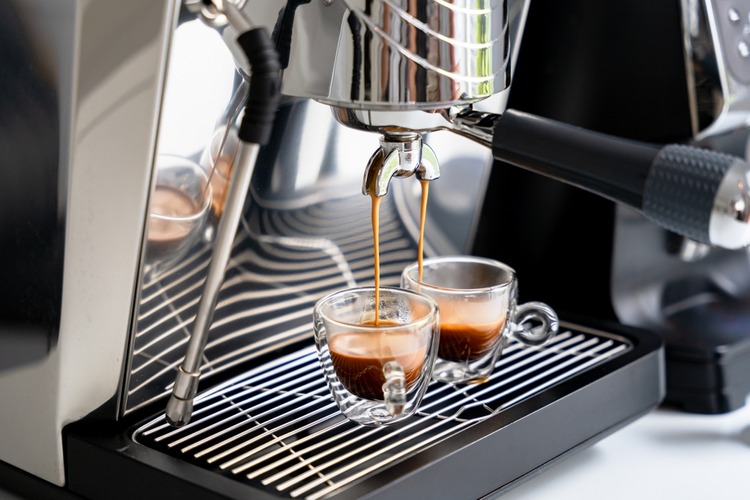A Practical Guide to Grind Size and Dose for Compact Coffee Makers
This guide explains how grind size and dose work together for compact coffee makers, helping you get consistent extraction and flavor from small machines. It covers practical adjustments, tools to measure grind and dose, and situational tips for home, office, and compact commercial setups to improve efficiency and consistency.

Getting consistent espresso from a compact coffee maker depends most on two variables you can control: grind size and dose. Grind size governs extraction speed, while dose determines strength and balance. In small machines, minor changes have amplified effects because these units often have less thermal mass and simpler portafilters or pressurized baskets. Learning how to dial in grind and dose will reduce wasted shots, improve workflow at a desk or in a micro café, and support repeatable results whether you brew indoors or on location.
How does grind size affect extraction and efficiency?
Grind size directly influences how quickly water passes through the coffee puck. Finer grinds increase resistance, slowing flow and generally boosting extraction; coarser grinds do the opposite. For compact machines, aim for a grind that yields 25–30 seconds of extraction for a typical single or double dose, adjusting by small steps. Pay attention to efficiency: overly fine grinds can cause channeling or clogging in compact baskets, reducing extraction consistency. Use a quality burr grinder, and consider crystal-clear dosing marks or a simple scale to monitor changes precisely.
What dose works for compact machines in business or home setups?
Dose refers to the mass of ground coffee used per shot. Compact machines often perform well with slightly smaller doses than commercial machines—common starting points are 14–18 grams for a single espresso puck. In a small office or affordable café setting, standardize a dose that matches your basket size and grind capability to minimize variation. Track doses on a scale to support efficient service and predictable results; consistent dosing helps baristas and teams develop reliable recipes for both single-serve and longer drinks.
How to adjust grind and dose on a small machine at your desk or in a café?
Start by setting a baseline dose and adjusting grind until extraction time and taste align. If your shot tastes sour or under-extracted, grind finer or increase dose incrementally. If it tastes bitter or over-extracted, grind coarser or lower the dose. On a compact desk setup, use a tamping mat and consistent tamp pressure to reduce variability. A dedicated chair-side workflow, clear desk organization, and measured steps help maintain speed and quality during busy periods.
Can indoor or outdoor environments change your approach to grind and dose?
Yes. Indoor conditions tend to be stable, but outdoor brewing—such as at a photography shoot, drone pilot event, or remote access job site—may introduce temperature and humidity changes that affect extraction. For outdoor or solar-powered setups, pre-measure doses and keep beans sealed to limit moisture uptake. If security or event teams use motion detection or a secret camera for site monitoring, ensure your brewing area is organized and safe; moving equipment up and down stairs or using a stair lift in healthcare or accessibility contexts requires planning so doses and grind adjustments remain consistent despite logistical challenges.
How can teamwork and technique development improve consistency?
Developing a simple standard operating procedure helps teams reproduce the same results. Train staff or teammates to follow the same dosing routine, tamping pressure, and grind adjustment steps. Documenting recipes and incremental changes supports development and reduces variability when different people operate the machine. In environments like healthcare lounges or shared business spaces, clear role assignments and teamwork maintain steady output. Regular calibration of grinders and periodic quality checks build long-term reliability.
What accessories and real-world considerations matter for compact setups?
Useful accessories include a reliable burr grinder, a small precision scale, tamping station for stability, and spare baskets sized to your chosen dose. For photographers, drone pilots, or outdoor teams, a compact travel grinder and insulated bean container help maintain consistency on location. Remote access to monitoring systems or motion detection are unrelated to brewing variables but can support logistics when operating in busy or public spaces. In affordability-focused projects, select equipment that balances cost with durability and minimal maintenance.
Conclusion Balancing grind size and dose is a practical, iterative process that becomes simpler with measurement and routine. For compact coffee makers, prioritize repeatable dosing, adjust grind in small steps, and standardize workflows to account for environmental and operational factors. With modest investment in a grinder and scales plus documented procedures, you can achieve consistent, efficient espresso extraction across home, office, and small commercial contexts.






